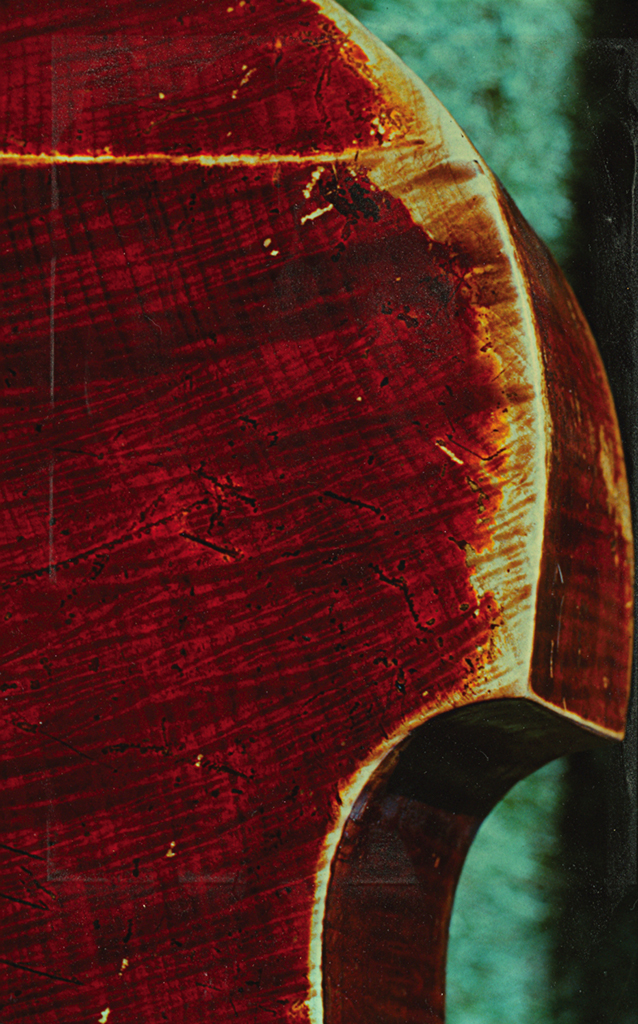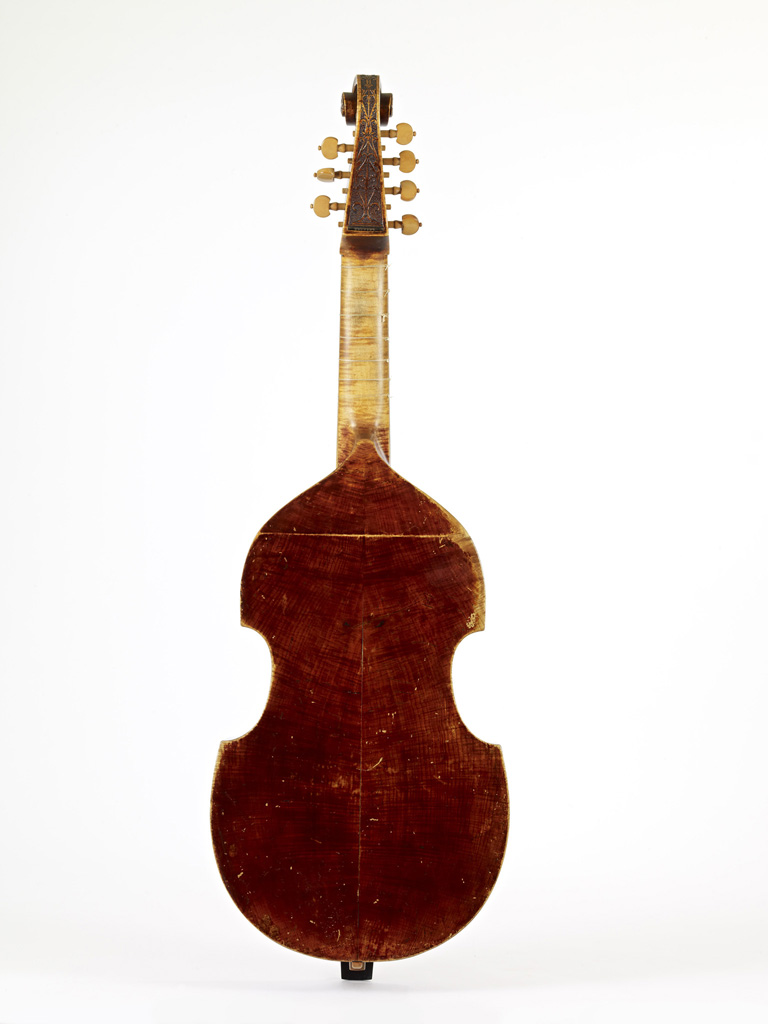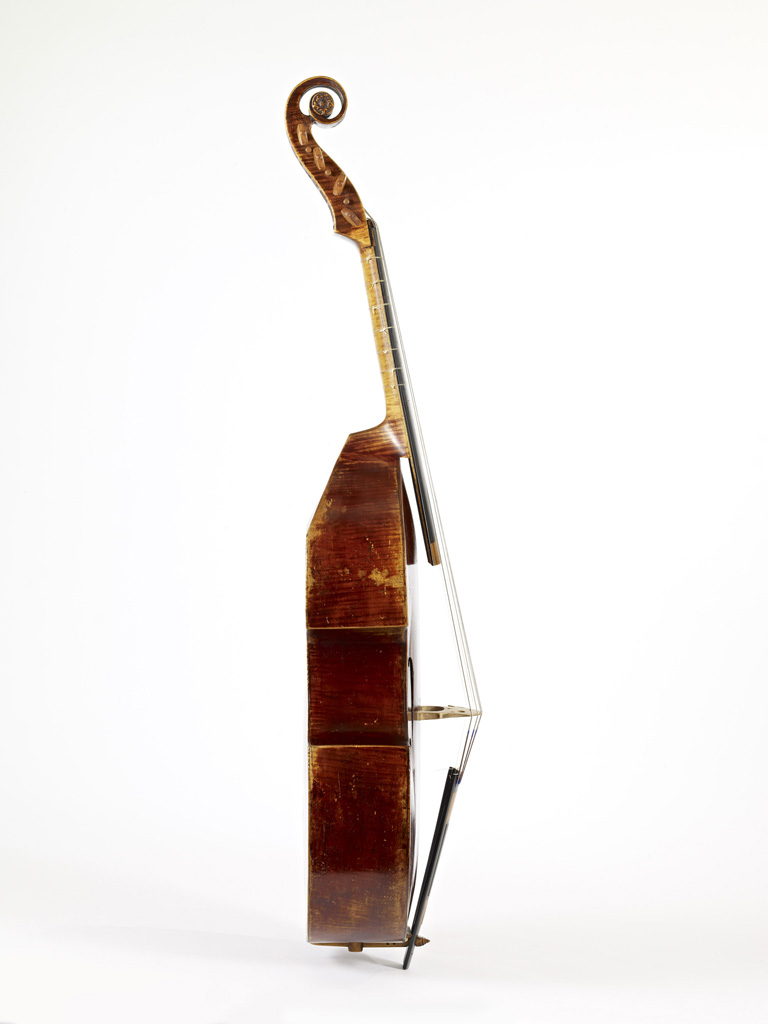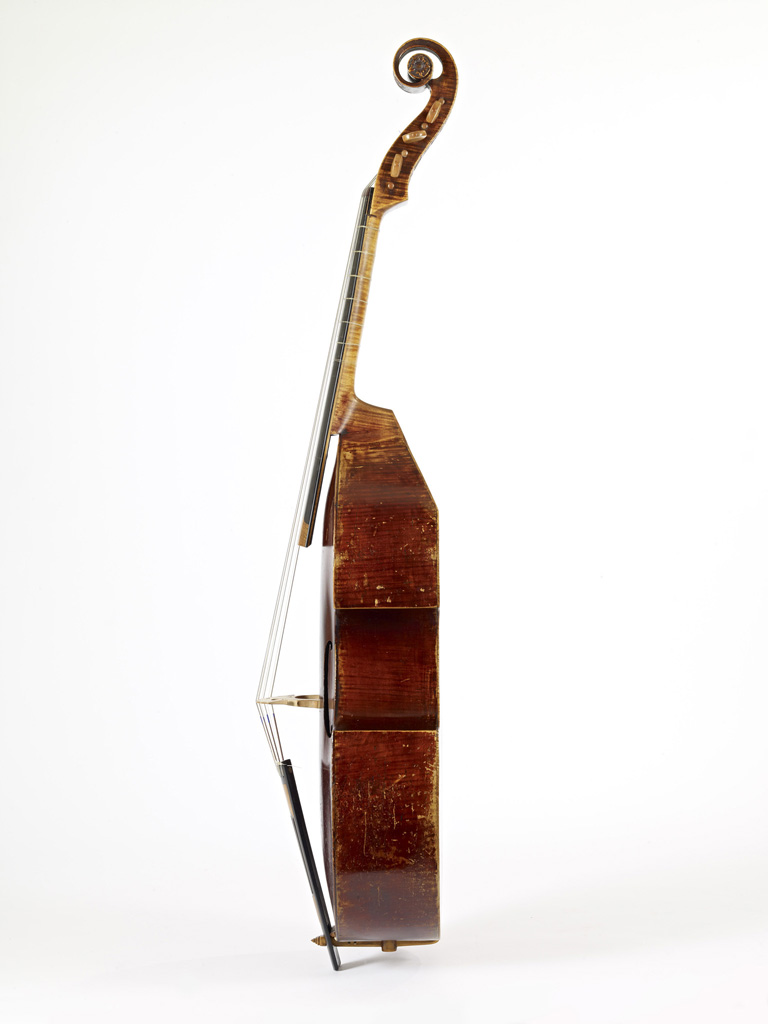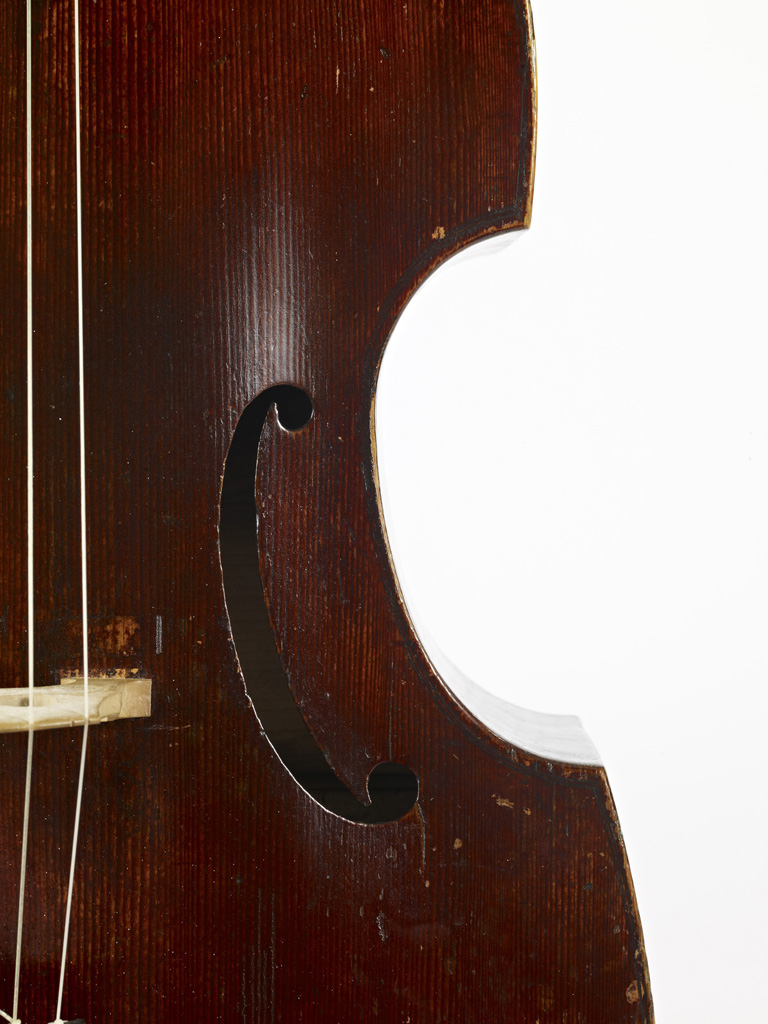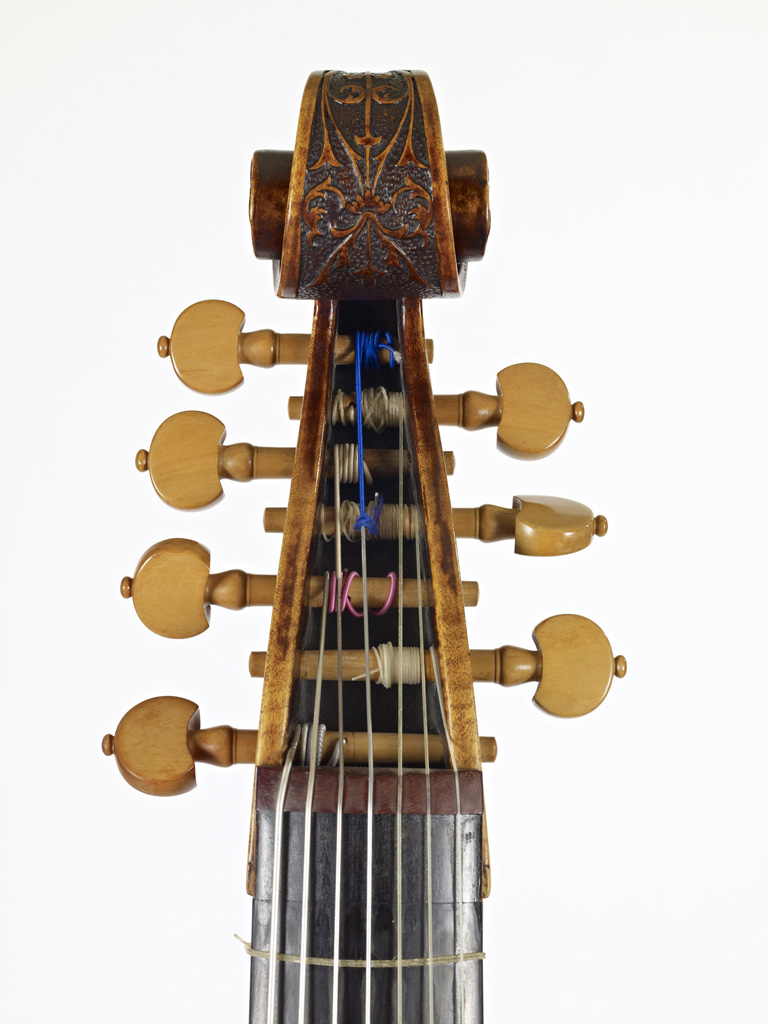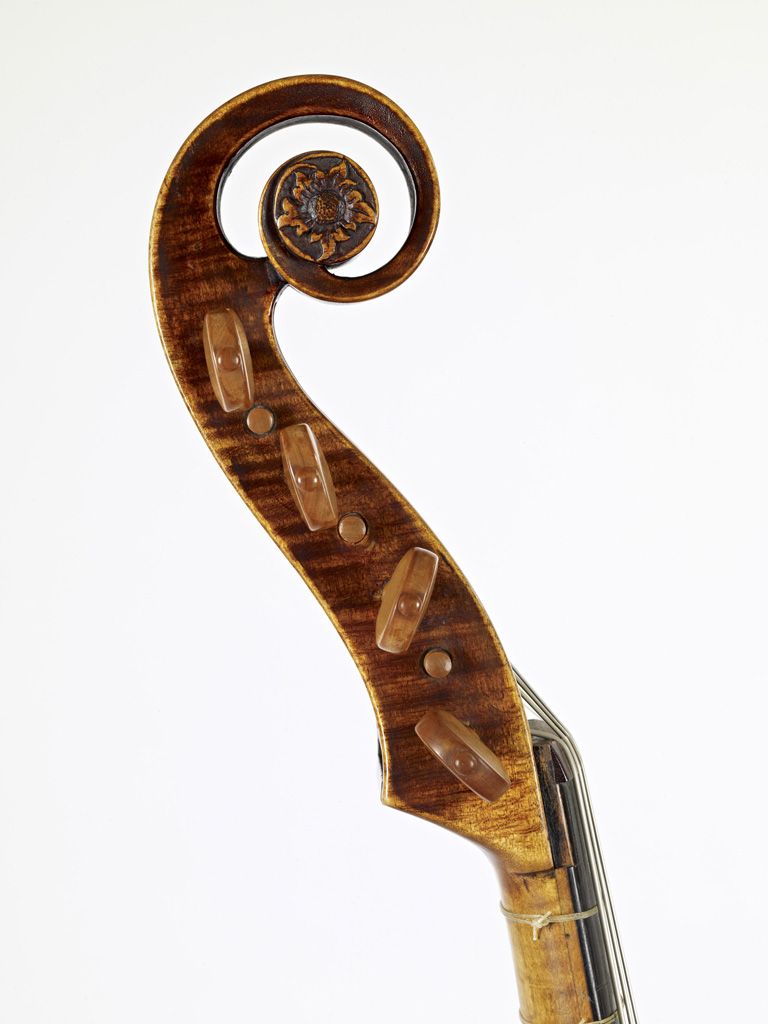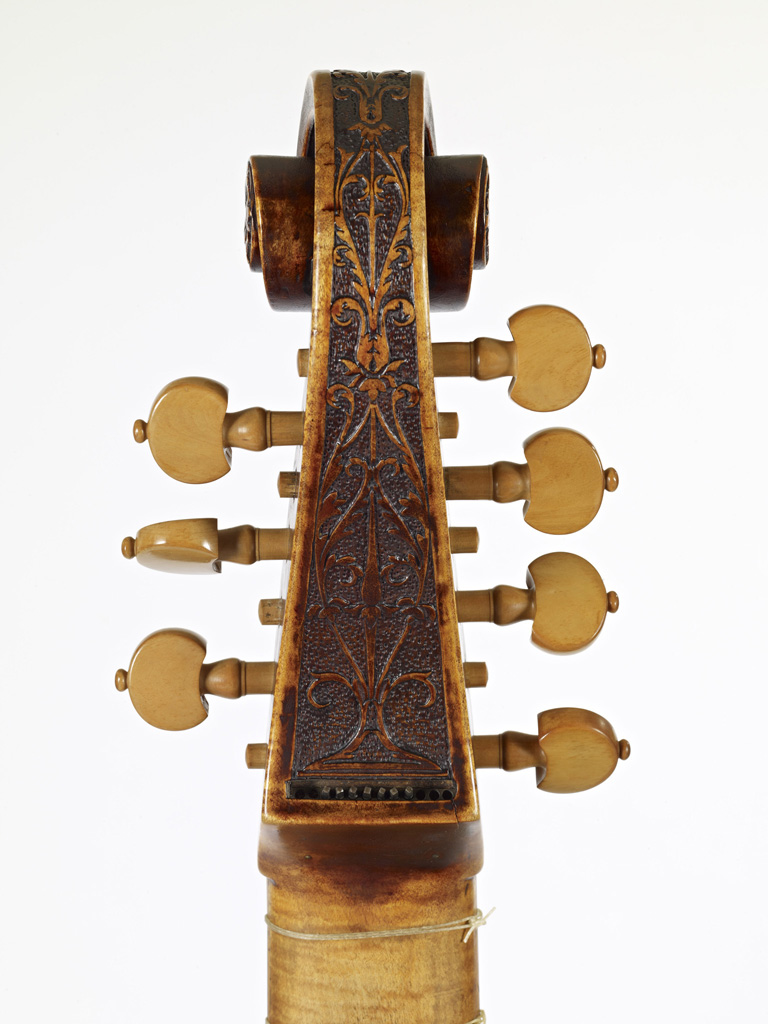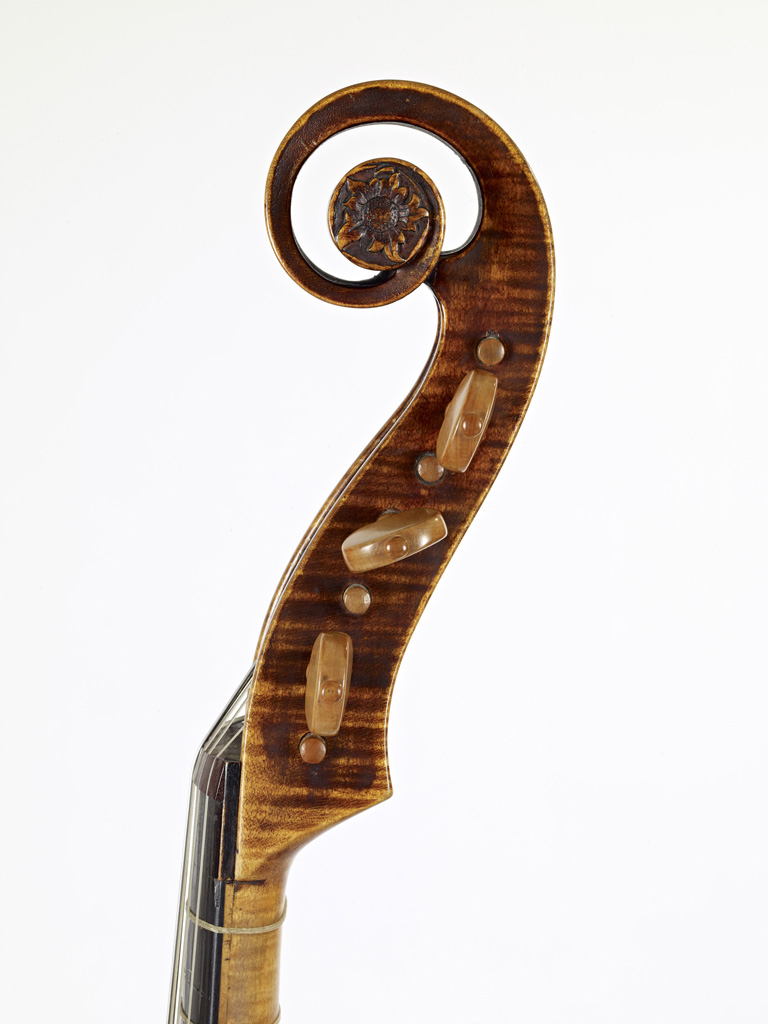The table is of two unmatched pieces, with 10 to 5 growth rings per cm, the grain showing a distinct waviness by the bass soundhole. The soundholes are C shaped. The single black-white-black purfling has a wide central strip. There are two saddles over the bottom block, a higher one of boxwood for the tailgut, and a lower one of ivory for the sympathetic strings once fitted to this instrument.
The back is two pieces of maple with an irregular medium flame slanting sharply upward along the center joint. The wood is quarter sawn but with wavy grain. There is no purfling. A piece of new wood has been grafted at the neck heel.
The ribs are six pieces of maple of medium to broad flame with random slant.
The replacement neck is flamed maple, the pegbox topped by a wide-open scroll. The top of the scroll and back of the pegbox are carved with strapwork in relief, the ground stippled with a sharp point, and there is a large flower is carved on each eye of the scroll. A slot in the heel of the pegbox holds watchkey tuners for seven sympathetic strings, with room for five more (cf. the twelve hitchpins in the bottom block). According to the Sotheby’s catalogue of November 17, 1977, the neck, scroll, and pegbox, as well as the fingerboard and tailpiece, are Dolmetsch work. There is also a repair label by Gibertini of Genoa dated 1838, and the style of much of the work fits that period better. This is especially true of the fingerboard and tailpiece. The fingerboard is of pine edged with maple and covered with ebony veneer, with a broad decorative boxwood panel at the bridge end. The fingerboard has been recently extended over the end of the pegbox to increase the string length. The tailpiece is ebony, with a central fluted panel and boxwood veneer and stringing. There are seven boxwood pegs. The boxwood hookbar has provision for an endpin.
The varnish is dark red brown.
Body length 69.5
Body width
upper bout 33.7
center bout 24.7
lower bout 40.7
String length 70.4
Rib height
top block 8.3
fold 12.8
upper corners 13.2
lower corners 13.2
bottom block 13.2
Label
Carlo Bergonzzi fecit
Cremona 1727
[printed except 27]
Repair label
Restauró e corresse nell’Anno 1838 in Genova
ANTONIO GIBERTINI DI PARMA
Premiato più volta in Milano con Medaglio etc.
[printed except 38 and Genova]
Bought in November 1977 at Sotheby’s, London


